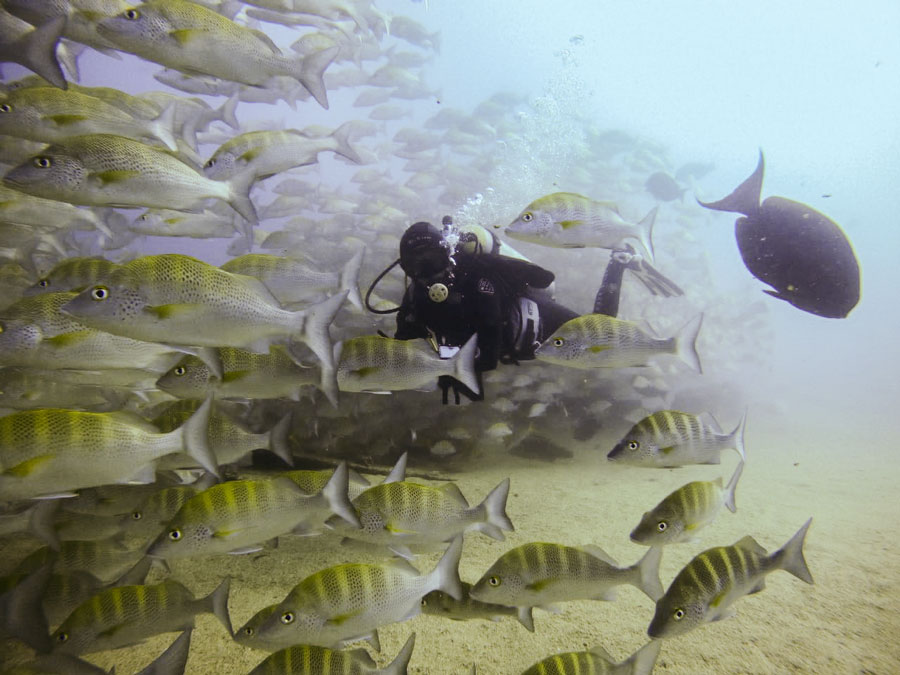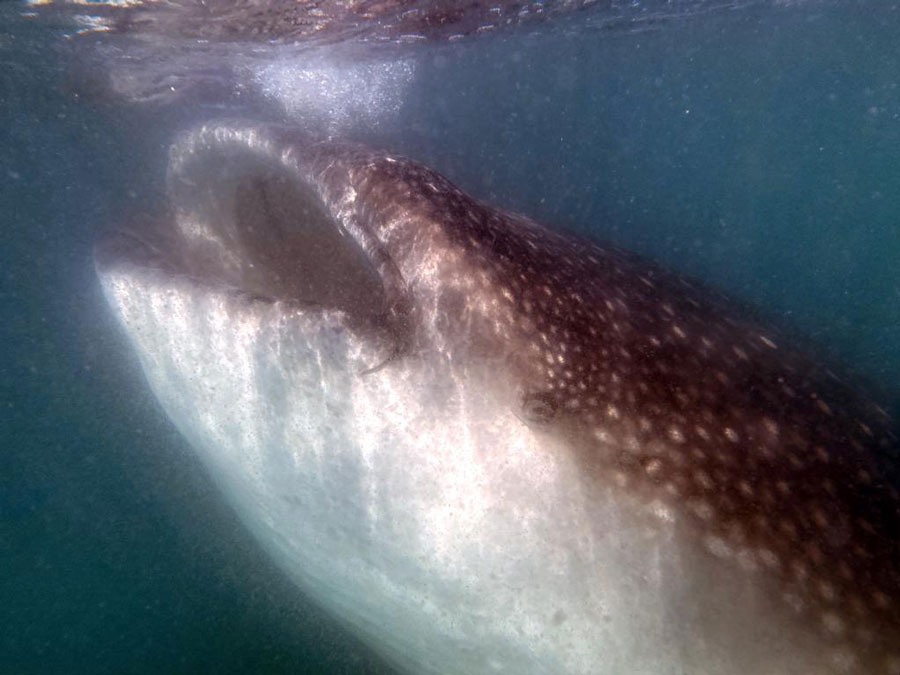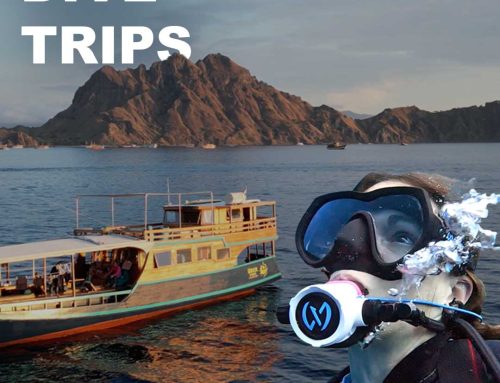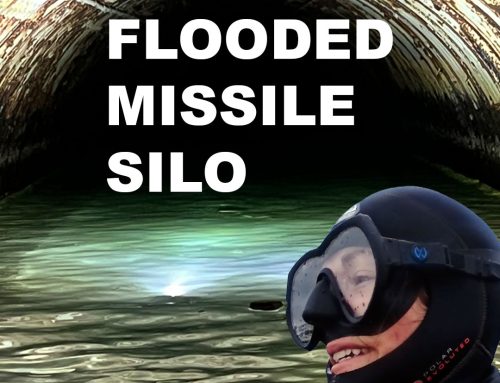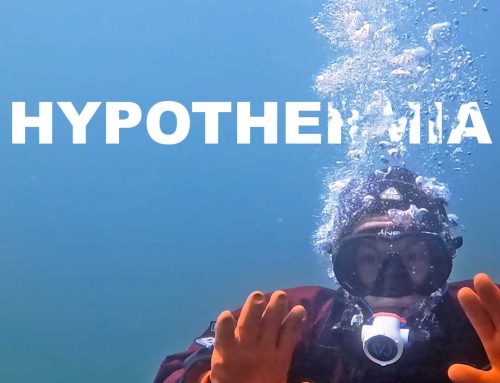Although scuba diving is a relatively safe adventure sport, all forms of the activity come with their own set of risks. Because of the technical aspects of rebreather diving, there is a general misunderstanding of this equipment, so in this 3-part blog series, we’ll be shedding light on what you should know before setting out to become a rebreather diver.
For now, we will explore the basics of scuba diving with rebreathers, how they work and pros and cons of rebreather diving.
What is a rebreather?
A rebreather is a type of scuba diving equipment that recycles the exhaled air of the diver. Unlike traditional open circuit scuba diving systems that release exhaled air into the water, rebreathers capture and filter the exhaled air, removing the carbon dioxide and adding oxygen, so that the diver can reuse it. This recycling of air means that a rebreather can provide the diver with a much longer dive time than traditional open circuit scuba diving systems–and this is only one of many benefits of which we’ll cover in the next blog.
How does a rebreather work?
Rebreathers come in two types: closed circuit and semi-closed circuit. Closed circuit rebreathers (CCR) are the style most commonly used by technical divers. As the name suggests, a closed circuit rebreather is a system in which the breathing circuit is a complete loop. The exhaled air from the diver is collected in a breathing bag, and the carbon dioxide is removed by a scrubber, which usually contains a material called Sofnolime.
Rebreathers use a variety of sensors to monitor the levels of oxygen, carbon dioxide, and other gases in the breathing circuit. These sensors feed information to a computer, which then calculates the appropriate amount of gas to add to the counterlung. Oxygen or diluent is then added to the breathing bag, as needed, based on the diver’s depth and partial pressure of oxygen in the blend. The unit basically acts as a portable nitrox blender, providing you with the perfect blend for each depth of your dive.
Semi-closed circuit rebreathers (SCR) work in a similar way, but they release a portion of the exhaled air into the water, rather than capturing and recycling all of it. This makes them less efficient than closed circuit rebreathers, but they are still more efficient than traditional open circuit scuba diving systems.
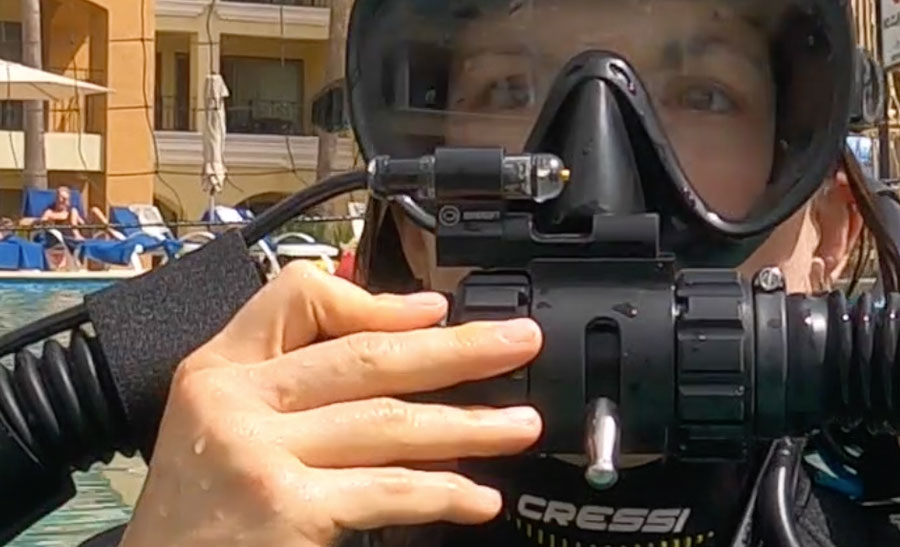
Pros and cons of rebreather diving
Rebreathers are a type of scuba diving equipment that are becoming increasingly popular among divers, particularly those who are interested in technical diving. Rebreathers allow divers to stay underwater for longer periods of time and explore deeper depths than traditional open circuit scuba diving systems. However, like all scuba diving equipment, rebreathers have their own unique advantages and disadvantages. In this article, we will explore the pros and cons of rebreather diving.
Pros:
- Longer dive times: One of the biggest advantages of rebreathers is that they allow divers to stay underwater for longer periods of time than traditional open circuit scuba diving systems. Rebreathers recycle the air that the diver breathes, which means that they don’t need to carry as much gas with them on a dive. The unit also provides the perfect blend of oxygen to increase your no decompression limits.
- Stealth mode: Because rebreathers recycle the gas you exhale, you are much quieter underwater. You may not realize it because diving feels so peaceful even on open circuit systems, but scuba divers make a lot of noise with their bubbles. This noise tends to scare away marine life. Therefore, rebreathers are the preferred diving equipment for underwater photographers and videographers who want to capture those intimate moments with critters.
- Deeper dives: Rebreathers allow divers to explore deeper depths than traditional open circuit scuba diving systems. This is because rebreathers can be used with diluent blends using helium, which is ideal for deep diving due to its inert properties as a gas.
- Better (and cheaper) gas management: Rebreathers allow divers to manage their gas consumption more effectively than traditional open circuit scuba diving systems. Because rebreathers recycle the gas, expensive blends using helium will last much longer for rebreather divers. It’s a well-known fact that open circuit technical divers breathing helium are literally exhaling dollars with breath–plus they’re releasing a significant amount of this limited resource into the atmosphere to be lost forever.
Cons:
- Complexity: Rebreathers are complex pieces of equipment that require a high level of knowledge and training to operate safely. Divers who are interested in using a rebreather should seek out professional training from a qualified rebreather instructor–and each unit has its own training so you must find an instructor who is teaching on your desired unit.
- Cost: Rebreathers are more expensive than traditional open circuit technical diving systems. This is because they are more complex and require more specialized components. However, if your main goal is to do a lot of heliox diving, the cost benefit is actually in the favor of the rebreather.
- Maintenance: Rebreathers require more thorough maintenance than traditional open circuit scuba diving systems. Many of us are guilty of not properly rinsing and cleaning our scuba gear each dive, but because rebreathers require you to breathe through the lungs built into the system, it’s imperative that everything is meticulously cleaned.
- Risk: Rebreathers carry a higher risk than traditional open circuit scuba diving systems. Improved technology has made rebreather diving much safer than ever before, but the equipment is inherently more complex, resulting in more room for error.
Conclusion:
Rebreathers are becoming an increasingly popular choice for scuba divers, particularly those who are interested in deep technical diving.
It is important to note that rebreathers can be complex pieces of equipment, and they require a high level of knowledge and training to operate safely. Divers who are interested in using a rebreather should seek out professional training from experienced instructors trained on their rebreather of choice.
Rebreathers are a powerful tool for technical divers and photographers alike. They are, however, more complex so thorough training, equipment maintenance, and dive checks are crucial to keep divers safe. Divers who are interested in using a rebreather should seek out professional training from a qualified rebreather instructor and carefully consider the pros and cons before making a decision.
Join me on upcoming Azul Unlimited dive expeditions
See what trips are coming up. I always give my community first dibs on spots, so you can sign up for Patreon (and get trip discounts) or my email list to be the first to know about new expeditions in the future.
